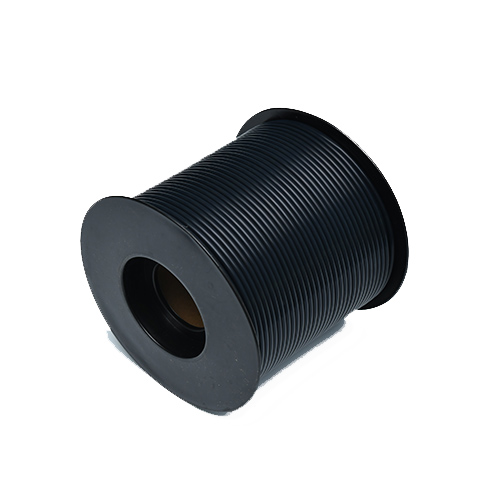PTFE Tubing Supplier: Characteristics, Applications, and Maintenance
Introduction to PTFE Tubing
Polytetrafluoroethylene (PTFE) tubing is a highly specialized fluoropolymer product known for its exceptional chemical resistance, thermal stability, and low friction properties. As a leading PTFE Tubing Supplier, we provide high-quality tubing solutions for demanding industrial, medical, and laboratory applications. This article explores the key characteristics of PTFE tubing, its diverse applications, and proper maintenance procedures.

Key Characteristics of PTFE Tubing
Chemical Resistance
PTFE tubing demonstrates unparalleled chemical resistance, withstanding virtually all acids, bases, and solvents. Laboratory tests show 0% weight change after 30 days immersion in concentrated sulfuric acid (98%) at room temperature. It remains unaffected by strong oxidizing agents like aqua regia, maintaining its structural integrity where other materials would degrade.
Temperature Stability
With an operating temperature range from -200°C to +260°C (-328°F to +500°F), PTFE tubing outperforms most polymer alternatives. Differential scanning calorimetry (DSC) analysis reveals no significant thermal degradation below 327°C (620°F), making it ideal for high-temperature fluid transfer applications.
Low Friction Coefficient
PTFE boasts the lowest coefficient of friction of any solid material (0.05-0.10), measured by ASTM D1894 standards. This property enables excellent flow characteristics with a pressure drop reduction of up to 40% compared to conventional tubing materials in fluid transfer systems.
Electrical Properties
The dielectric strength of PTFE tubing measures 19.7 kV/mm (500 V/mil) per ASTM D149, with a volume resistivity exceeding 1018 Ω·cm. These properties remain stable across a wide frequency range (50 Hz to 10 GHz), making PTFE ideal for high-performance wire insulation.
Mechanical Properties
Tensile strength ranges from 20-35 MPa (2900-5000 psi) with elongation at break of 300-500% (ASTM D638). The compressive strength measures approximately 12.5 MPa (1800 psi) at 1% deformation, demonstrating excellent load-bearing capacity for thin-walled tubing.
Applications of PTFE Tubing
Chemical Processing Industry
Transfer lines for aggressive chemicals (acids, alkalis, solvents)
Lining for corrosion-prone piping systems
Sampling lines in harsh environments
Pharmaceutical and Medical
Catheters and surgical instruments (USP Class VI compliant grades)
Biopharmaceutical fluid transfer with ≤0.1 µg/cm2 extractables
Sterilizable (autoclave, gamma, ETO) medical device components
Semiconductor Manufacturing
Ultra-high purity (≤1 ppb metallic contaminants) gas delivery
Wet chemical distribution with ≤0.1 particles/mL (>0.1μm)
CMP (Chemical Mechanical Planarization) slurry transport
Automotive and Aerospace
Fuel line insulation (meeting SAE J2024 standards)
Hydraulic system components (operating at 3000+ psi)
Lightweight (2.16 g/cm3 density) fluid transfer in aircraft
Food Processing
FDA-compliant tubing for dairy and beverage processing
High-temperature food-grade fluid transfer (meeting 21 CFR 177.1550)
Non-stick surfaces for viscous product handling
Maintenance and Care of PTFE Tubing
Cleaning Procedures
Standard Cleaning: Use isopropyl alcohol (IPA) or mild detergent solutions (pH 5-9) with soft brushes. Rinse with deionized water (resistivity >18 MΩ·cm).
Deep Cleaning: For stubborn contaminants, use specialized PTFE-compatible solvents like perfluorohexane at 40-60°C (104-140°F) in ultrasonic baths (40 kHz frequency recommended).
Inspection Protocols
Visual inspection for discoloration (compare to virgin PTFE color standards)
Dimensional checks (OD/ID measurements with accuracy ±0.01 mm)
Leak testing at 1.5x working pressure for 30 minutes
Surface roughness measurement (Ra ≤0.8 μm for critical applications)
Storage Recommendations
Store PTFE tubing in controlled environments:
Temperature: 15-25°C (59-77°F)
Humidity: 30-50% RH
Protected from UV exposure (use opaque covers)
Coiled with minimum bend radius of 5x OD to prevent cold flow
Installation Best Practices
Cutting: Use razor-sharp blades (single-edge recommended) at 90°±0.5° to tubing axis. Deburr edges with PTFE-specific tools.
Connection: For compression fittings, apply 0.1-0.3 N·m (0.7-2.6 in-lb) torque incrementally. Use ferrules with Ra ≤0.4 μm surface finish.
Bending: Minimum bend radius = 3x OD for standard tubing, 5x OD for reinforced varieties.
Preventive Maintenance
Replace tubing every 3-5 years in continuous service
Monitor for creep deformation (> 5% dimensional change under load)
Check for permeation (weight gain > 0.5% indicates chemical absorption)
Document all maintenance per ISO 9001/13485 requirements




